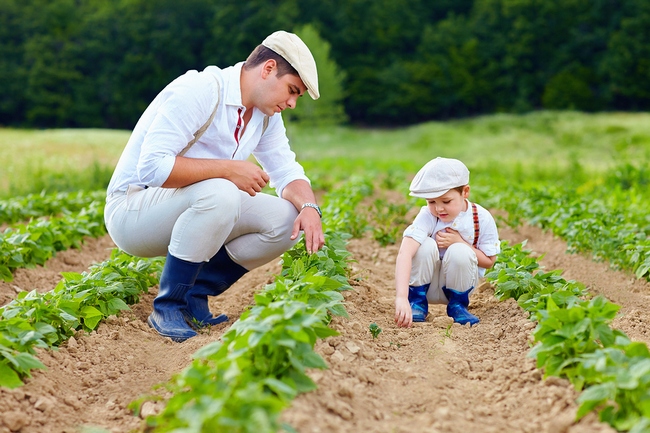- Make It Yourself Lavender Heart-Shaped Bath Bombs!
- 20 Things You Never Knew About “Down There”
- 12 Best Foods For Those Suffering From Arthritis Pain
- 12 Personal Hygiene Mistakes Almost Everyone Makes (Mom Never Told You About #4!)
- 15 Medicinal Plants And Herbs From The Cherokee People
- 12 Mind-Blowing Benefits Of Drinking Coconut Water During Pregnancy
- 12 Outstanding Winter Foods That Won’t Fatten You Up Like A Christmas Turkey
How to Grow and Use Lemongrass

Photo credit: bigstock.com
Are you interested in growing your own lemongrass plant?
It’s easier than you think! If you live in a location with mild winters, you can plant some in your garden. If you have more harsh winters, keep it in a large pot that you can move into a garage or covered patio area to overwinter.
Don’t bother buying seeds. This plant takes a very long time to grow from seeds, as long as 3 months just to germinate! If you don’t know anyone with a plant, you might be able to start a new plant from stalks you buy at your local farmers’ market. As long as the stalks are still green and firm, you can more than likely get them to take root.
Cut an inch or two off the end of the leaves and put it in a glass of water. Place in a sunny location or a sunny window. Soon, you should see roots coming from the base within 2 weeks. If not, try again with a new piece. This is successful almost all the time.
Once the roots are at least an inch long, it is ready for planting. You can place it in a pot, or put it outside in the garden.
If you decide to plant your lemongrass outside, and find you love it so much you want more, space them at least 3 feet apart. Expect your lemongrass to grow at least 6 feet in height. You can trim them down, but the new shoots do need room to grow.
SEE ALSO: Top Fruits and Veggies You Can Regrow at Home Over and Over Again!
Lemongrass needs plenty of nitrogen. Fertilize once a month and don’t let your plant become too dry, especially if you have hot summers.
If you plant your lemongrass in pots, they can grow to be quite large, so use at least a 5 gallon pot. If it starts to outgrow the pot, you can simply remove stalks to keep it under control.
Lemongrass needs a minimum of 6 hours of sunlight each day. It does grow inside near sunny windows but it won’t grow very many stalks. You can fertilize container pots every two weeks with just a standard fertilizer mix but skip it during the winter months to avoid growth. Be sure you water frequently, especially in hot weather.
One of the great things about lemongrass is that it is often used as an insect repellant, so you won’t have any pests to worry about, other than something called leaf blight. It’s not a pest, but a type of fungus. If you find your leaves drooping or wilting, and they have brownish or rust colored leaves, you probably have leaf blight. Cut off and remove every infected leaves, then spray the plant with a natural fungicide that is suitable for edible plants.
If you have cats, be aware that they like lemongrass and might chew on the leaves. It won’t hurt them, but if it’s a potted indoor plant, they might knock the plant over.
Once your plant grows at least 12 inches tall, you can begin to trim leaves. If you want to harvest the entire stalk, use a very sharp knife and cut it off right at the soil level. Take outer stalks first. They should be at least ½ inch thick for harvesting. Always cut off stalks or leaves, breaking them can damage the plant.
You can store a fresh stalk in your refrigerator for several days, wrapped in a damp paper towel. Alternately, you can dry the leaves, chop them, and then store them in an airtight container.
You can cook with your fresh lemongrass, but only use the white core part of the plant. You can use the leaves to make lemon tea. The easiest way to use lemongrass in cooking is to use a muslin bag. Place the chopped up pieces of lemongrass in the bag and add it to the water when cooking rice or any other dish, then remove the bag when you are ready to serve. This will give you the lemon flavor without the hard pieces of stalk being in your food.
































